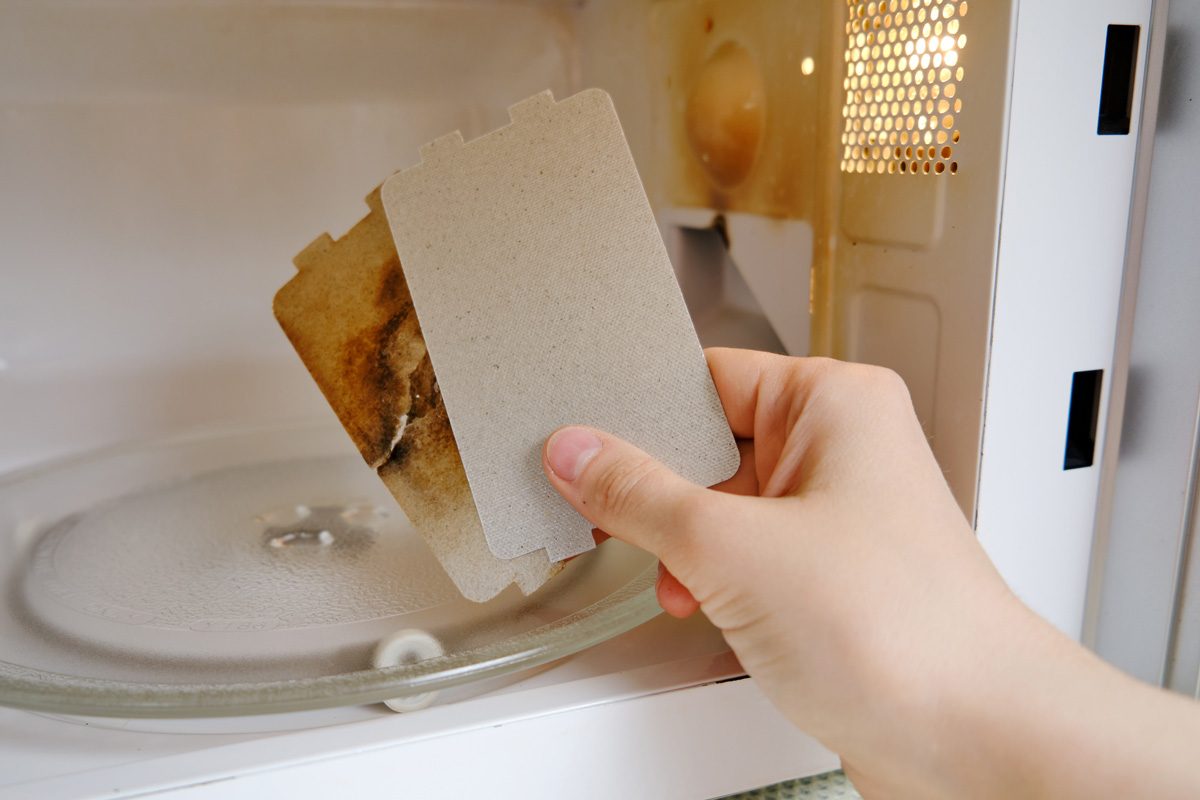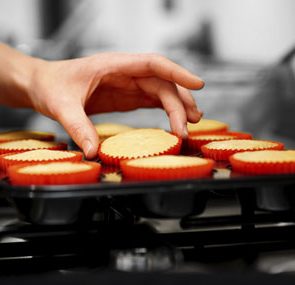Can you really set your microwave on fire? It depends. Here's what happens if you put metal in the microwave—and no, don't try it at home.

What Actually Happens to Metal in the Microwave

From the time countertop microwaves started to hit the market in the late 1960s, we’ve all known one thing: Metal is verboten! However, as it turns out, that’s not completely accurate. Back in 2003, the MythBusters team actually dispelled the rumor that any metal placed in a microwave would lead to a certain explosion. That said, if you’re wrapping a fork in tinfoil and sticking it in on high, you’re definitely making a microwave mistake. So what’s the real scoop—can you put metal in the microwave?
Keep reading, because we’re answering the lingering question of what happens when metal and microwave mix.
Get Reader’s Digest’s Read Up newsletter for more knowledge, humor, cleaning, travel, tech and fun facts all week long.
Microwave 101
First, let’s back up and consider how a microwave oven actually works. As Wired explains, when you press start, the microwave begins producing negatively charged electrons that bounce around the positively charged walls of your oven. (Over)simply put, this activity produces light waves in the microwave range, and they start bouncing around too. The foods you put in the oven are able to absorb these microwaves, thanks to the water they contain. That water is, in turn, magnetically attracted to the microwaves, and the pull of the attraction makes them vibrate till they heat up and transfer that heat to the molecules around them. Voilà! Hot food.
Where metal comes in
Metal is bad at absorbing microwaves. According to physicist David McCowan in The Takeout, since metal doesn’t contain any water, it has no way to effectively use those microwaves. Some energy from the microwaves sort of dances around on the surface of whatever metal you stuck in the oven. Some of it is reflected off the surface of the metal and bounces off it, like a reflection in a mirror. That doesn’t mean metal can’t get hot; it can. It contains electrons that are attracted to the microwaves too. But without something to efficiently absorb the energy this attraction produces (i.e., food), it transfers it to whatever’s nearby—namely, the internal circuitry of your oven, resulting in overheating and possibly fire.
The dangers of thin metal

According to Spoon University, the thinner and sharper your metal is, the more dangerous it is to stick it (alone) into your microwave. This goes for aluminum foil (especially if it’s bunched up), the delicate golden glaze on your grandmother’s tea set and the tines of forks. Basically, moving electrons either start to concentrate in the creases or along the sharp edges of the metal and build up a charge—like static electricity. Wired calls them “concentrated spots of negative change.” This charge will bounce angrily around to find a place it would rather be; that’s what accounts for any spark you might see if you glance through the door of the oven. If there’s something flammable in the microwave with the metal (i.e., a piece of paper), you get a fire.
Thick metal for the (safety) win
Why you might want to put metal (aside from the metal rack that comes with your appliance) into your microwave is a question only you can answer. But if you must, opt for a thick, smooth slab of the stuff. Wired points out that thicker metal heats up much more slowly than, say, a thin sheet of aluminum foil, and smooth metal is not apt to cause sparks from bouncing, angry electrons looking to get to a better, less jagged location. Other less dangerous metal-related microwave situations include covering the metal with food, and using the microwave to heat items like Hot Pockets, which have metal-lined pouches designed to be microwaveable and to steer bouncing electrons toward food in order to crisp up its outsides.
Other unsafe materials
As multiple sources point out, it’s easy enough to avoid sticking metal in a microwave. But there are other food receptacles that are a matter of concern and should also be avoided if you don’t want to cause microwave problems. One of these is polystyrene foam, aka styrofoam. This heat-unstable plastic material can warp or melt when exposed to microwaves. And it can also release harmful chemicals into your food when it gets hot, according to Real Simple. Non-microwave-safe plastic containers, like cold-storage tubs meant to hold foods like yogurt, share a similar problem. The FDA recommends using only plastic that is labeled “microwave safe.”
Not all foods!
There are plenty of foods you can microwave but probably aren’t. But there are also foods that are absolute microwave no-no’s. According to the Atlanta Journal-Constitution, these include:
- Hard-boiled eggs, since bouncing electrons can’t escape the shell or the egg whites
- Grapes, whose small size helps microwaves turn them to plasma before causing them to explode
- Hot chile peppers, which can release eye-searing, retina-burning chemicals when you open the oven to extract them
- Leftover potatoes, which may contain bacteria that will not heat up in the microwave enough to kill off their spores and make them safe to eat
Why trust us
At Reader’s Digest, we’re committed to producing high-quality content by writers with expertise and experience in their field in consultation with relevant, qualified experts. We rely on reputable primary sources, including government and professional organizations and academic institutions as well as our writers’ personal experiences where appropriate. We verify all facts and data, back them with credible sourcing and revisit them over time to ensure they remain accurate and up to date. Read more about our team, our contributors and our editorial policies.
Sources:
- Wired: “What’s Up With That: Metal in the Microwave Explodes—Or Does It?”
- The Takeout: “We Asked A Physicist: Why Can’t We Put Metal In The Microwave?”
- Spoon University: “What Happens When You Put Metal in the Microwave”
- Real Simple: “Which Food Containers Are Safe for the Microwave?”
- FDA: Microwave Ovens
- Atlanta Journal-Constitution: “15 things you should never put in the microwave”























